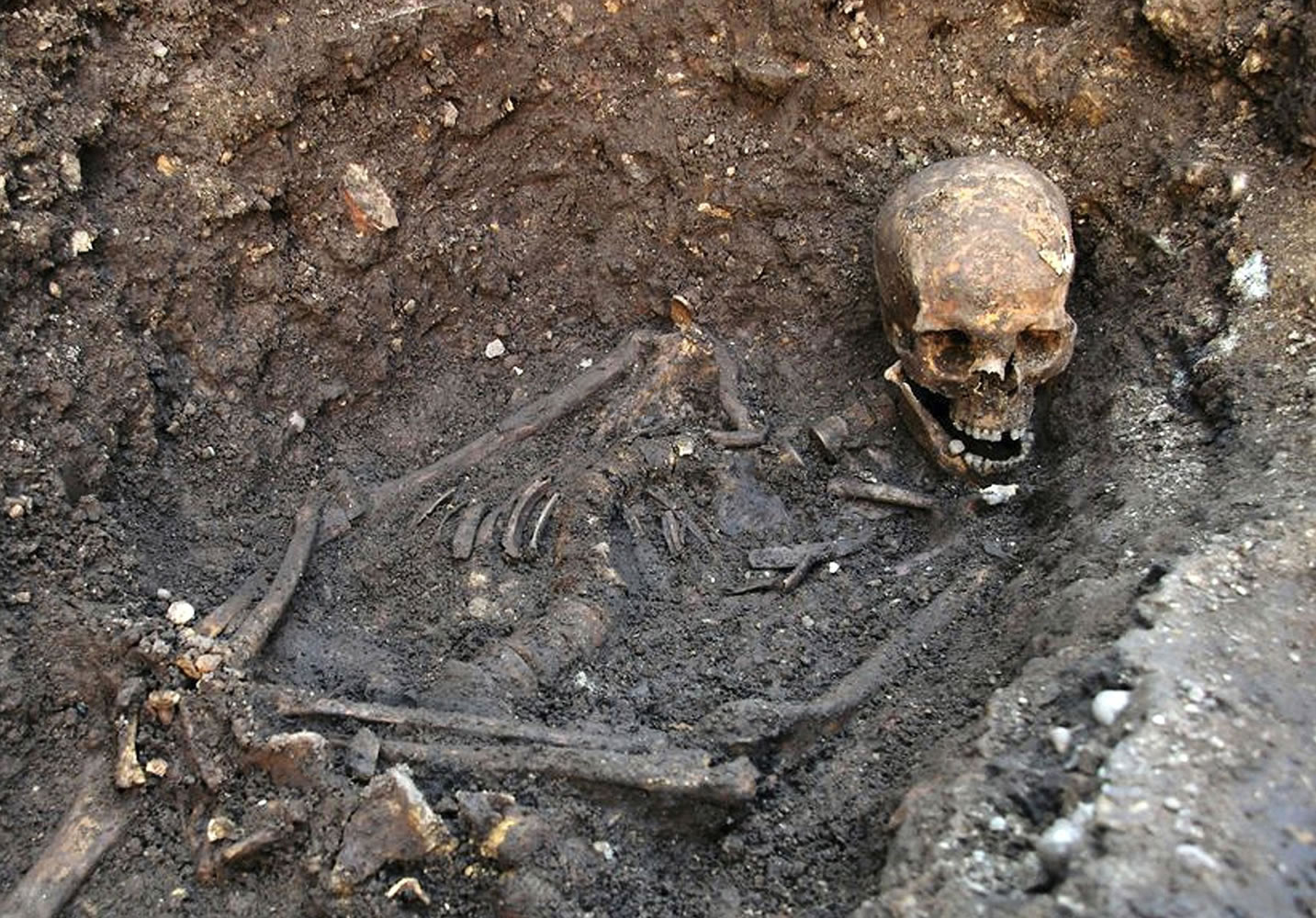It’s a 500-year-old missing person case and researchers say it has now been solved, definitively.
The missing person was King Richard III, the controversial English monarch, described as having one shoulder higher than another. He ascended to the throne in 1483 and died in battle just two years later in August 1485 at the age of 32.
A sprawling research team of archaeologists, historians, engineers and scientists was fairly confident that the twisted skeleton discovered in 2012 beneath a Leicester parking lot where a friary once stood belonged to the king. But now they say they can prove it beyond a shadow of a doubt.
In a paper published Tuesday in Nature Communications, scientists report that mitochondrial DNA obtained from the skeleton was a perfect match with one of King Richard’s living relatives, and a near-perfect match with a second relative. Mitochondrial DNA, or mtDNA, is passed down from mothers to their children and remains relatively unchanged through generations.
To get the DNA, lead author Turi King crushed samples taken from the skeleton’s teeth and a small segment of its femur bone into a powder. That powder was put in a solution overnight and then separated in a centrifuge the following day. The powder fell to the bottom of the tube, leaving the DNA in the solution.
“Parts of the study were fairly routine for forensic analysis, but in this case they have done lots and lots of sequencing, to be extra sure of the results,” said Erika Hagelberg, who studies ancient DNA at the University of Oslo, and who was not involved in the study.
King said that evidence from the mtDNA, taken in conjunction with other strands of evidence, provides conclusive proof that the skeleton did belong to King Richard.
“If you look at how likely it is to find a male 30 to 34 years of age, in a specific part of a church, with battle injuries, who had severe scoliosis making one shoulder higher than the other, and combine that with radio carbon dates that match what we know about Richard, and the mitochondrial DNA you get a likelihood ratio of 6.7 million to 1 that these remains are Richard III,” she said.
In the paper, the researchers say they are 99.999 percent certain they have found King Richard.
King also tried to confirm that the bones were those of King Richard by comparing the Y-chromosome DNA of the skeleton with another set of living relatives of the king. This is genetic information that is passed down just through the male line, from father to son.
Genealogist Kevin Schurer, also of the University of Leicester, identified five living males who should have shared the same Y-chromosome as Richard. However, King did not find a match. This suggests that there was a false paternity event at some point in the genealogical tree.



